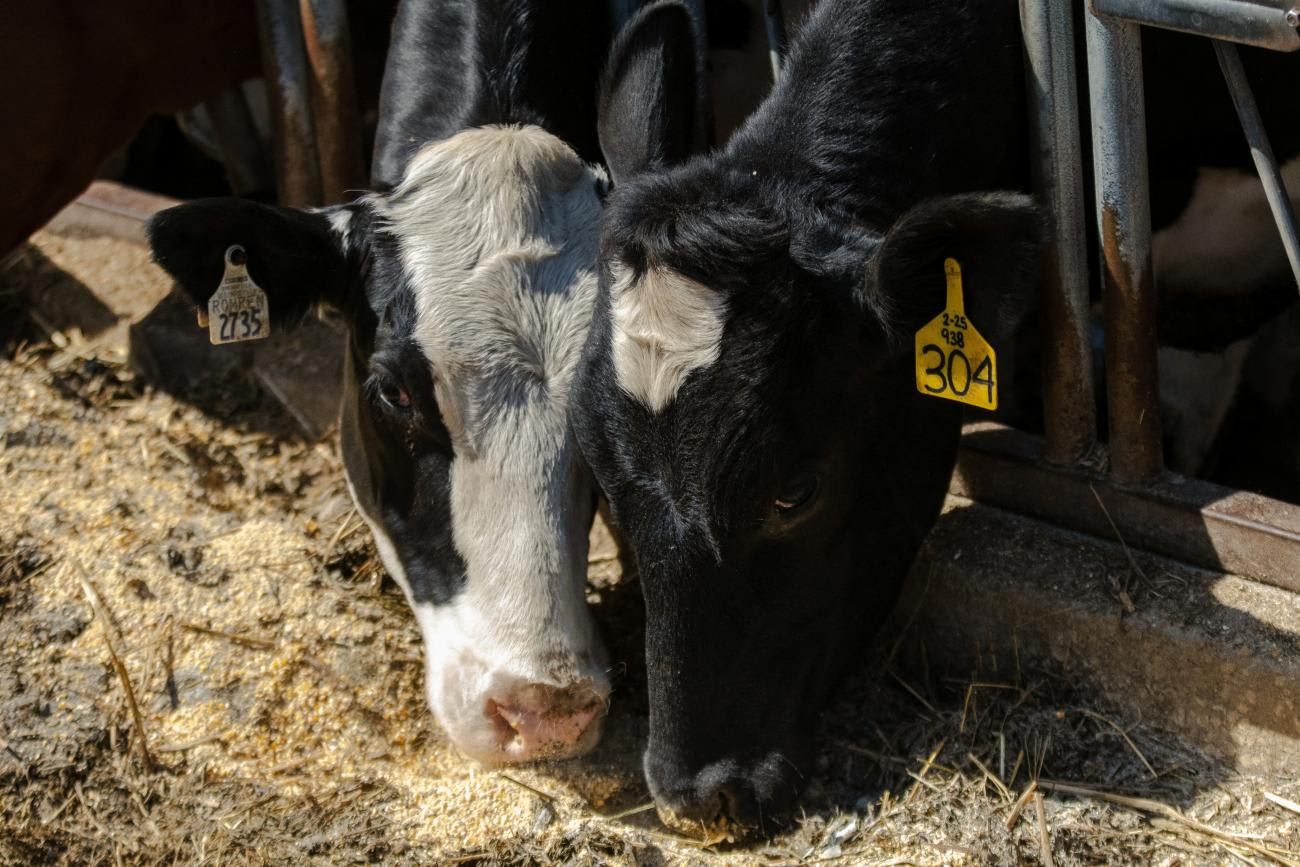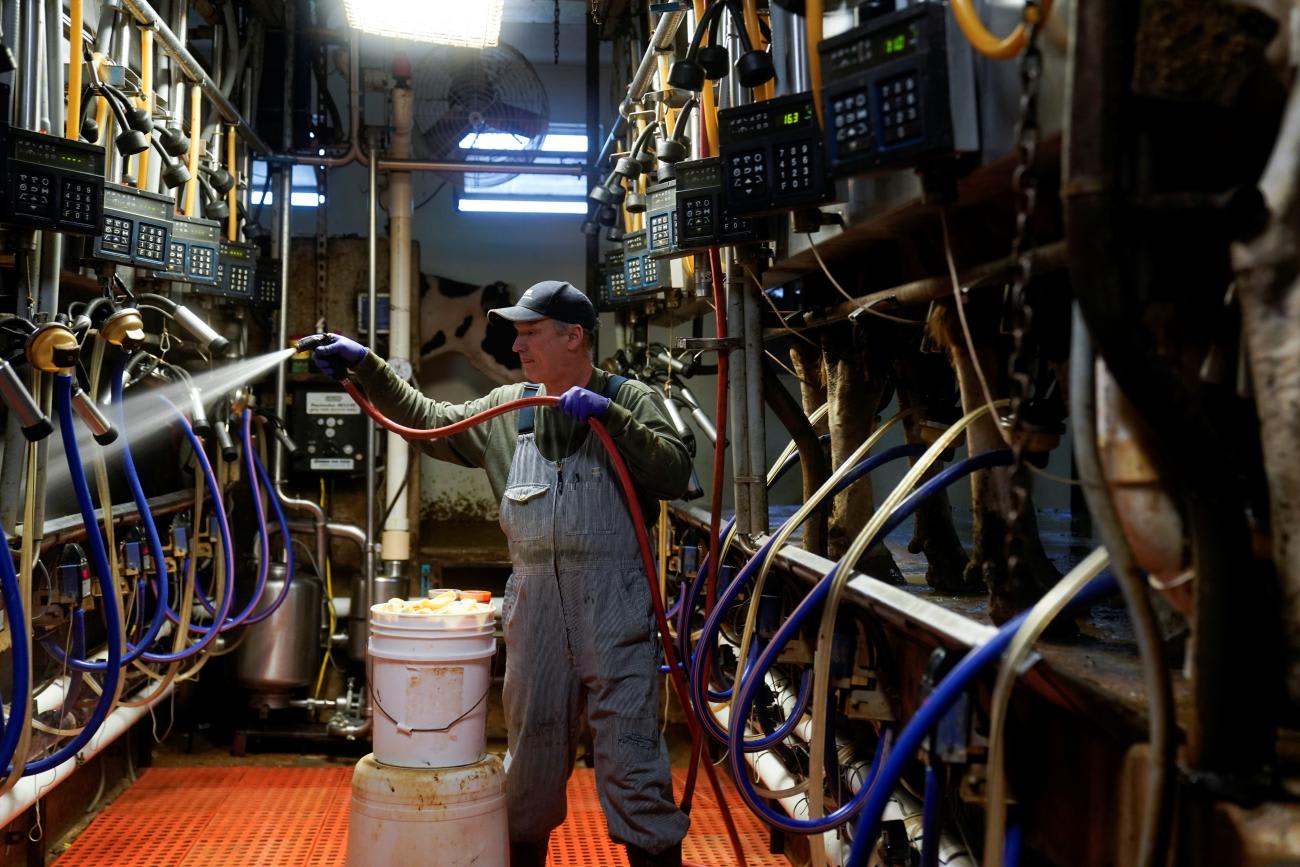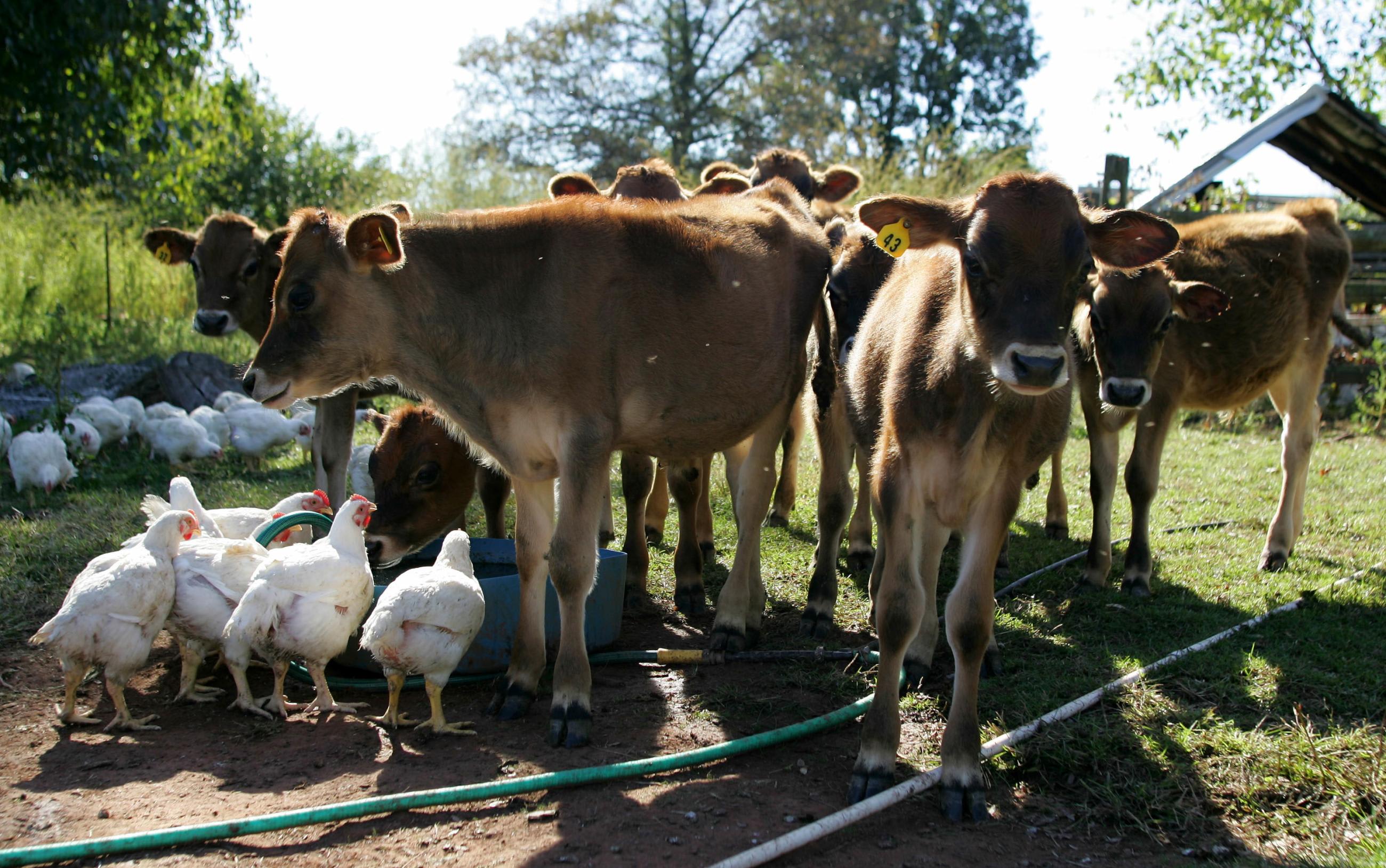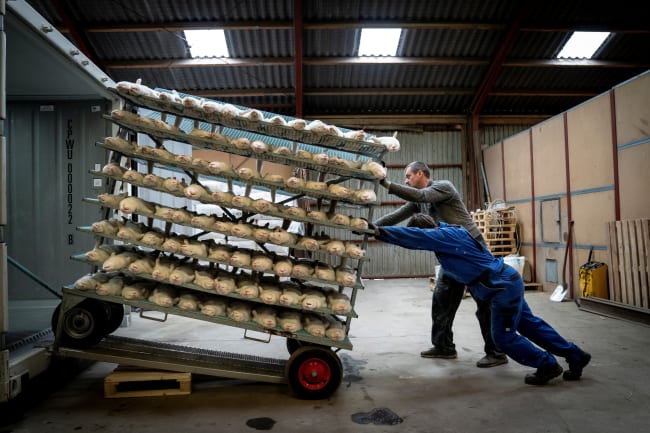When U.S. officials first announced in late March 2024 that the H5N1 avian influenza had been detected in Texas dairy herds, Beth Thompson knew it was only a matter of time before the virus reached cows in South Dakota, where she serves as the state veterinarian. Her prediction came true days later on April 8, when she received an email reporting likely cases of H5N1 in approximately 50 cows at a dairy in an unidentified part of the state.
Thompson says that her immediate reaction was to contact the farm owner and manager to see how she and her colleagues could assist and to ensure that they could work together to gather valuable data along the way. She knew, though, that she would have to navigate the challenges with more questions than answers.
"This is not a previously reported disease in dairy cows, so there isn't nearly enough data available on how [it] is affecting animals," Thompson says. "How is it moving through dairies? How quickly do animals recover? What does it look like when they do recover? All these questions and more need to be answered."
Many of those questions remain unaddressed a month after the initial federal announcement, even as more herds come down with the virus. As of April 24, H5N1 has been confirmed in 33 dairy herds across eight states. Veterinarians who spoke to Think Global Health say they recognize that it takes time to implement new protocols, but without basic information such as how cows contract the virus and how long they shed it once infected, it's difficult to issue precise instructions for things like quarantine.
The efforts to gather the data to fill in these unknowns have also been piecemeal and slow, says Keith Poulsen, a clinical associate professor at the University of Wisconsin–Madison School of Veterinary Medicine, and the director of the Wisconsin Veterinary Diagnostic Laboratory. He says each state is acting differently rather than following a unified approach.
Another problem, he continues, is that reporting of sick cows is voluntary, and many farmers are averse to opening their operations up to government involvement. Still others are in denial about the seriousness of the threat the virus poses to the cattle industry. This creates a problem with data collection and responses to the virus.

"It is considered common knowledge that on the front lines of the outbreak there are more farms with affected cows" that have not reported them, Poulsen says. "It is very likely that there are more states involved, too."
As these issues continue, some public health watchers argue that the situation echoes some of the early setbacks seen during the COVID-19 pandemic, suggesting that lessons have not been learned.
A few signs of improvement are evident, though. Last week, for example, the U.S. Department of Agriculture (USDA) announced that it will begin paying for testing for the virus in cattle. This is a positive step, but more is still needed, Poulsen says. On April 24, the USDA also released new mandatory reporting standards for positive cases and testing requirements for dairy cows moving across state borders.
"We really need some strong national leadership, and clearer guidance for how we move forward."
Unusual Signs
H5N1 is a strain of highly pathogenic avian influenza (HPAI), a virus that has caused the deaths of hundreds of millions of birds over the decades, including at poultry farms in the United States. Starting in 2022, several regions began experiencing a string of unprecedented outbreaks of H5N1 in wild and domestic birds.
Yet the "highly pathogenic" label, at least for now, does not apply to what's spreading in U.S. cattle. Sickened cows typically lose their appetite, become dehydrated, and take on a lackluster demeanor with fever—but so far they haven't succumbed to the virus.
Their milk productivity drops and, in severe cases, the milk they do produce begins looking "kind of yellow and more viscous," Poulsen says. Strangely, for now the disease seems to most seriously affect milking cows in mid- to late lactation. Younger heifers can also shed the virus in their milk, but without clinical signs. Within an affected herd, about 10% of animals come down with overt clinical signs.
Sickened cows typically lose their appetite, become dehydrated, and take on a lackluster demeanor with fever—but so far they haven't succumbed
The USDA confirmed in a frequently-asked-questions document posted on April 16 that the virus is being transmitted directly from cow to cow via an unknown route. "We know that it's circulating in cows, so it's no longer avian—it's bovine," says Joe Armstrong, a veterinarian at the University of Minnesota. For this reason, and because the virus is not deadly for cows, most industry experts are referring to it as H5N1 in cows, rather than as HPAI.
The latest genetic sequencing of the virus suggests that the cows in Texas were infected by wild birds via a single spillover event in late 2023, possibly from contaminated food or water sources. "Birds really love what we feed to cows, and they're almost impossible to eliminate," says Fred Gingrich, a veterinarian and the executive director of the American Association of Bovine Practitioners, a nonprofit cattle veterinary professional association.
Fortunately, for now the impact on public health is minimal. Only one case of cattle-related H5N1 transmission to a human has been reported, in a dairy worker in Texas who recovered. U.S. officials also say there is no current threat to the food supply. Experts emphasize that dairy products and meat should be safe for consumption because influenza viral particles are destroyed by pasteurization and cooking based on past research on milk from humans and studies on eggs—the latter are processed at lower temperatures than retail milk from cows.
On April 23, the U.S. Food and Drug Administration (FDA) said it had detected the genetic fragments of H5N1 in retail milk, but further tests are needed to determine whether the positive test was due to inactive remnants of the pathogen or to a viable virus. The agency says that results from those studies—and others assessing all stages of milk production—will be made available in the next few days to weeks. The FDA reaffirmed that pasteurization is effective.
"None of the preliminary work shared in working groups suggests that pasteurization is not 100% effective," Poulsen says.
Cases of H5N1 have also been confirmed in 48 mammal species across 26 countries, from bobcats and bears to seals and bottlenose dolphins.
Spillover into humans, such as the case of the Texas dairy farmer, has been rare, but the potential concern is that those incidents tend to be lethal. Since 2003, the World Health Organization has recorded 889 human cases of H5N1 and 463 deaths—a disturbing case fatality rate of 52%.
"Influenza viruses change and jump species," Poulsen says. "That's why we need to make sure H5N1 in dairy cattle doesn't become a public health problem or cause interruptions to our food supply chain."
Need for Unity
So far infected cows have not died, but they have required veterinary care. This need puts significant strain on dairy farmers, who often lack the facilities to quarantine and provide care for hundreds of sick animals. Farmers lose about $100 per cow on a herd basis, Gingrich adds, "so a 1,000-cow dairy could see economic losses of $100,000."
Experts from industry, academia, professional organizations, and government are meeting regularly to discuss H5N1 in cattle and have put together initial recommended guidelines. The USDA is also "encouraging producers and veterinarians to minimize dairy cattle movement," a USDA spokesperson wrote in an email. "We expect that minimizing movement, upholding good biosecurity practices and testing animals before necessary movements will limit disease spread sufficiently to avoid the need for regulatory restrictions or quarantines."
Trying to prevent the virus from reaching new herds is easier said than done, however. For example, although the USDA recommends that all dairy cows be tested for the virus before they are moved to a new facility, "I don't know of anyone who is doing that," Armstrong says.

One disincentive for testing is that no protocol currently exists defining how farmers whose herds do test positive "get out of the box," as Armstrong puts it—or the series of steps needed to resume business as usual after a test comes back positive and triggers USDA involvement. Poulsen suspects that this is probably why fewer new herds and positive tests have been reported in the Southwest states over the past few weeks: farmers want to avoid liability, risk, and government intervention.
Rather than testing, farmers who have the capacity are now quarantining arriving cattle to observe them for symptoms before introducing them to resident animals. But many, Poulsen adds, don't have the facilities or resources to do this.
According to Gingrich and others, simply stopping the transport of cattle is also not an option. The industry constantly moves animals within and between states to different specialized facilities that are designed to care for and process cows at different stages of their life. Some dairy farms, for example, do not have the facilities or space needed to raise calves. "I just don't know what we would do with those calves if they couldn't leave," Gingrich says. "It would be a terrible health and welfare issue."
Farms are not required to report affected cows, so many farms are not reporting because they have no financial or liability support
Keith Poulsen, clinical associate professor
Starting in late April, USDA began paying for pre-movement testing of H5N1 in cows. But significant funding gaps remain at the state and federal level, Thompson says. For example, the USDA compensates poultry farmers whose flocks are depopulated—an approach that both supports farmers and incentivizes them to promptly report outbreaks—but no equivalent program currently exists for milk production losses. "Farms are not required to report affected cows, so many farms are not reporting because they have no financial or liability support, [which] poultry farms do," Poulsen says.
Denial and lack of communication and collaboration among dairy farmers, politicians, industry representatives, and veterinarians is another major problem, Armstrong says—one that exacerbates issues with data collection and resources. "Some people are more than happy to bury their head in the sand on this one because they don't want to admit it's a problem," he says. "One thing I hear all the time is, 'Oh, this will just burn itself out.' The other one is, 'It's not here, so it's not my problem.'"
But for those who are "in the trenches" treating H5N1 outbreaks in their animals, he continues, the lack of resources and "denial attitude" can strain not only farm operations, but also the mental health of all involved. "I've got veterinarians who have cried over this because they're dealing with it and people are telling them it's not real," he says.
As the country—hopefully—comes together to contain the issue, Armstrong urges policymakers to also ensure that resources are set aside to support the personal well-being of those affected. "It's a huge problem for farming and agricultural communities that we don't talk about enough in situations like this."













